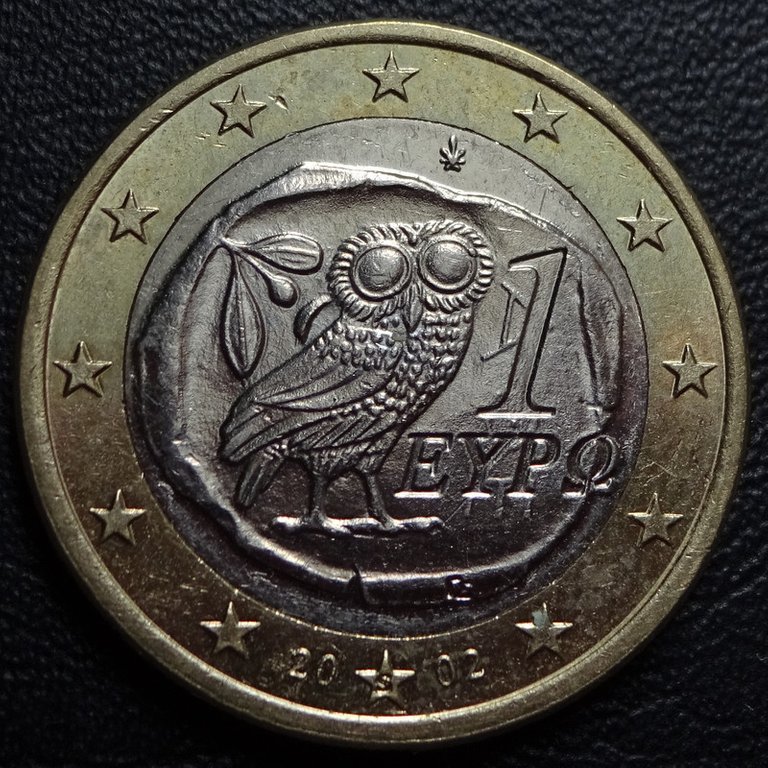If you live in a country within the Eurozone, you might have seen this circulating in your country too - although it's not that spectacular when faded from circulation (and by this stage, most are). It started circulating in 2002 and continues to this day, being the Greek version of the Euro.
This is a coin which is kind of unique, because it depicts ...another coin. The coin depicted on the center is the ancient Athenian tetradrachm that was in wide circulation for nearly 5 centuries, in an area that spanned from Rome to India (after the Macedonian and Roman conquests). Each city-state (Athens in this case) issued its own tetradrachm of similar weight and shape but had different depictions depending the city of origin. Athens minted a lot of them due to having access to a very rich silver mine (Lavrion). The ancient drachma was around 4 grams of silver, so the tetra-drachm (4x) was around 16 grams / half ounce.
In a sense, the modern euro coins are similar, in that each member-state mints its own euro, with their own depiction, but they are all interchangeable and fungible. The difference is that they aren't made of silver.
So what are these euro-coins made of?
Coin composition is brass on the edge, while the core is nickel, sandwiched in the two exterior layers of cupronickel. The nickel at the innermost part of the core, makes the coin slightly magnetic - which feels slightly weird (you don't really expect that it'd stick to a magnet).
Photographic settings: Compact Sony DSC-WX220 / ISO 100 / EV -2.0 / Natural Light (indoors - near the window)
Copyright notice: I release these in the public domain, for use or edit, by anyone, for any reason, with no attribution required.



Nice one
That little bit of Greek coin history is interesting, I had no idea it was used so widely at the time.
Indeed - it's very impressive. I don't think there is a modern equivalent that has achieved something so universal in status.